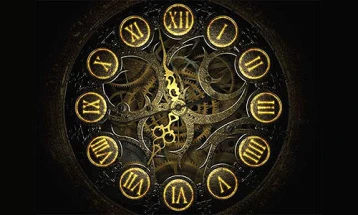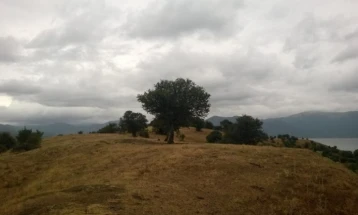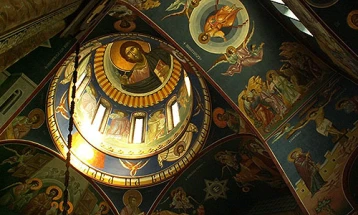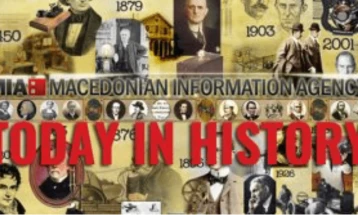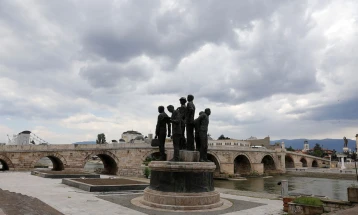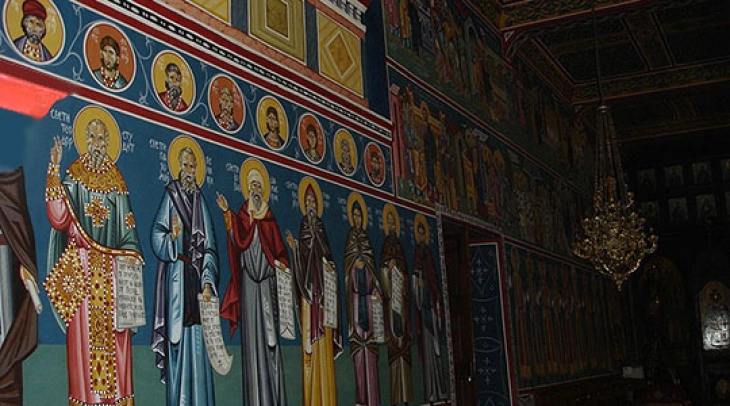
10 March 2023 (MIA)
Macedonian Orthodox Church Calendar
St. Tarasius, Patriarch of Constantinople
His predecessor, Patriarch Paul, secretly left the patriarchal throne, retired to a monastery and received the Great Habit. This was during the reign of Irene and Constantine. By Paul’s advice, Tarasius, a senator and advisor to the Emperor, was chosen as Patriarch in 784. He quickly passed through all the stages of ordination and became Patriarch. A man of great physical stature and great zeal for Orthodoxy, Tarasius accepted this undesired state in order to help in the struggle of Orthodoxy against heresy, especially that of Iconoclasm. He was responsible for the summoning of the 7th Ecumenical Council in Nicaea in 787, where the iconoclasts were condemned and the veneration of the holy icons was restored and con-firmed. Tarasius was very compassionate to the poor and indigent, building them shelters and feeding them, but he was decisive with those in power in the defence of faith and morals. When the Emperor Constantine divorced his lawful wife, Maria, and took a kinswoman to live with him, seeking the Patriarch’s blessing to re-marry, Tarasius not only withheld his blessing, but first counselled and then reproached him, and finally excommunicated him, as death approached, those round him saw him answering the demons: `I am not guilty of that sin, nor of that one’, until he was incapable of speech. He then began defending himself with his arms, driving them away from him. As he breathed his last, his face shone as with the light of the sun. This truly great hierarch entered into rest in 806. He had governed the Church for 22 years and four months.
Catholic Calendar
Forty Martyrs
A party of soldiers who suffered a cruel death for their faith, near Sebaste, in Lesser Armenia, victims of the persecutions of Licinius, who, after the year 316, persecuted the Christian of the East. The earliest account of their martyrdom is given by St. Basil, Bishop of Caesarea (370-379), in a homily delivered on the feast of the Forty Martyrs. The feast is consequently more ancient than the episcopate of Basil, whose eulogy on them was pronounced only fifty or sixty years after martyrdom, which is thus historic beyond a doubt. According to St. Basil, forty soldiers who had openly confessed themselves Christians were condemned by the prefect to be exposed naked upon a frozen pond near Sebaste on a bitterly cold night, that they might feeze to death. Among the confessors, one yielded and, leaving his companions sought the warm baths near the lake, which had been prepared for any who might prove inconstant. One of the guards set to keep watch over the martyrs beheld at this moment a supernatural brilliancy overshadowing them and at once proclaimed himself a Christian, threw off his garments, and placed himself beside the thirty-nine soldiers of Christ. Thus the number of forty remained complete. At daybreak, the stiffened bodies of the confessors, which still showed signs of life, were burned and the ashes cast into a river. The Christians, however, collected the precious remains, and the relics were distributed through many cities; in this way the veneration paid to the Forty Martyrs became widespread, and numerous churches were erected in their honour. One of them was built at Caesarea, in Cappadocia, and it was in this church.
